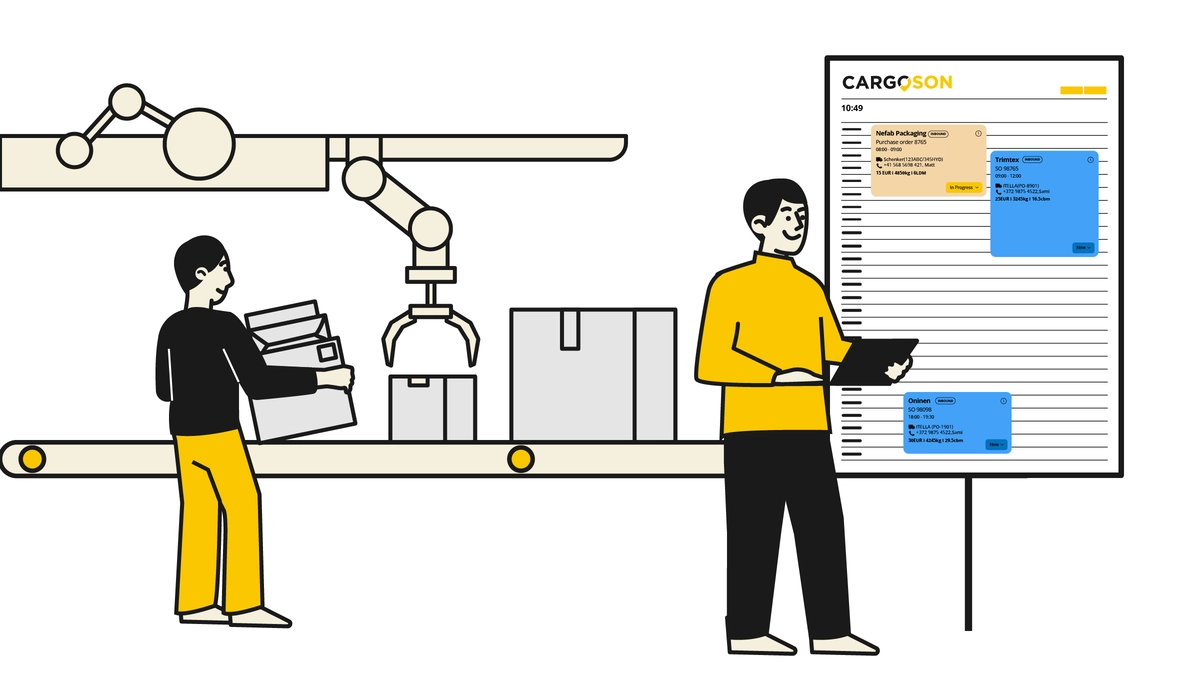In today's fast-paced logistics landscape, efficient dock scheduling and transport management are vital to ensuring smooth business operations. The integration of Dock Scheduling Software with a Transport Management System (TMS) like Cargoson can significantly improve the efficiency of warehouse docks, reducing interruptions to business continuity. In this article, we explore the concept of dock scheduling, the role of TMS, and the benefits of integrating these systems to enhance your logistics processes.
What Is Dock Scheduling?
Dock scheduling is the process of coordinating and managing the arrival and departure times of trucks at warehouse docks. It involves planning the sequence of shipments to optimize the use of dock doors and ensure timely loading and unloading. Dock Scheduling Software helps automate this process, enabling customers to book dock appointments online, reducing the need for constant back-and-forth communication booking appointments via phone calls. Advanced dock scheduling platforms provide real-time visibility into upcoming appointment requests, allowing for better management of inbound loads and outbound shipments.
What Is TMS?
A Transport Management System (TMS) is a software solution designed to help businesses manage their transportation logistics. It handles various aspects of shipping, including planning, execution, and tracking of shipments. A TMS like Cargoson offers complete visibility into the shipping process, from the shipper portal to the final delivery. The Transport Management System can be used by any type of business - from small to large scale. Yet the bigger amount of people & shipments to handle the bigger the effect. The most common TMS-using companies are Manufactures, Wholesalers, Retailers, and E-commerce businesses.
How Integration Works?
One of the main features of the integration is the ability to set loading times for shipments directly within the TMS, eliminating the need for manual data entry. This ensures that all scheduling information is accurate and up-to-date, reducing errors and saving time. Additionally, warehouse staff can print labels and CMRs for loading appointments, further automating the preparation process and ensuring that all necessary documentation is readily available.
Moreover, the truck registration plate information is automatically updated on both the TMS and dock scheduling platforms,
ensuring that all records are consistent and accurate.
This feature is particularly important because it eliminates the need for manual updates and reduces the risk of errors
that can occur when information is transferred manually.
When a carrier updates the registration plate info in the TMS, this information is instantly reflected in the dock scheduling software.
This real-time synchronization means that warehouse staff always have the most current and accurate data,
which is critical for coordinating loading and unloading activities.
Start Your Free Trial
No credit card required.The integration ensures that up-to-date information is accessible to everyone involved in the logistics process, from warehouse staff to supply chain managers. This transparency enhances communication and coordination across the supply chain, leading to more efficient operations and improved service levels. By leveraging the combined strengths of TMS and dock scheduling software, businesses can meet their logistical needs more effectively, ultimately supporting their growth and success.
Benefits
-
Improved Dock Performance: With a dock scheduling system, you can better manage the sequence of shipments and dock appointments, reducing driver detention fees and improving dock performance.
-
Complete Visibility: Gain real-time visibility into upcoming appointment requests, current dock status, and overall logistics operations, which helps in making informed decisions.
-
Reduced Communication Overheads: Minimize the need for constant phone calls and emails with a centralized shipper portal that centralizes communication channels.
-
Optimized Resource Allocation: Ensure that warehouse docks and personnel are used efficiently, reducing peak resource requirements and the need for overtime labor.
-
Enhanced Collaboration: Use the power of integration to improve communication between internal customers, suppliers, and drivers, leading to smoother operations.
-
Business Continuity: Prevent interruptions to business continuity by having a flexible scheduling system that can adapt to changes and unforeseen circumstances.
-
Cost Savings: Achieve major cost savings through better management of dock appointments and transportation schedules, minimizing delays and detention fees.
-
Scalable and Cloud-Based: A cloud-based dock scheduling system like LoadingCalendar is scalable to your business growth, offering flexible scheduling options to meet your evolving needs.
Integrating dock scheduling software with a TMS like Cargoson enables businesses to manage their logistics operations more effectively, improving service levels and meeting the demands of today's fast-paced supply chain environment.
How Can I Integrate TMS With Dock Scheduling?
Integrating your TMS with dock scheduling software might seem like a complex task, but with Cargoson and LoadingCalendar, it's incredibly straightforward. Cargoson has already developed a out-of-the-box integration with LoadingCalendar, meaning that as a customer, you don't have to do anything yourself. This pre-built integration allows you to quickly start benefiting from the combined functionalities of both systems without the need for additional setup or configuration.
By choosing Cargoson and LoadingCalendar, you ensure that your transport management and dock scheduling processes are automatically synchronized. If you want to see all the features that LoadingCalendar has to offer, check out our pricing page. Or if you want to try out LoadingCalendar before making any decisions, use our 14-day free trial.
